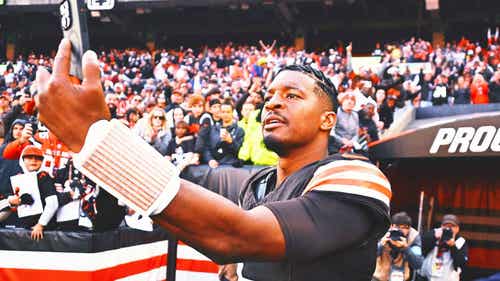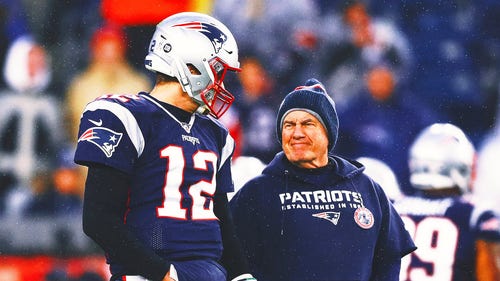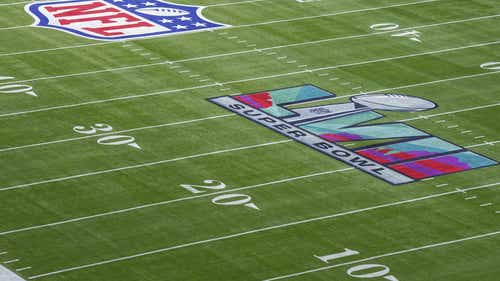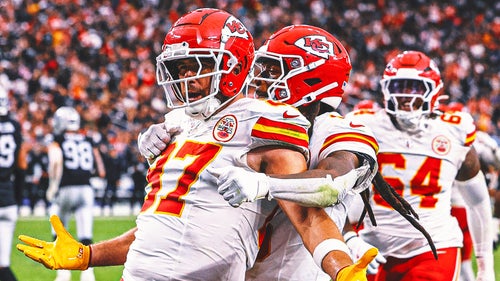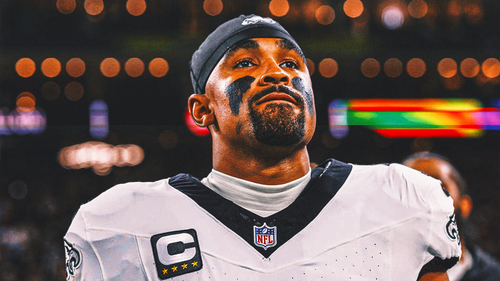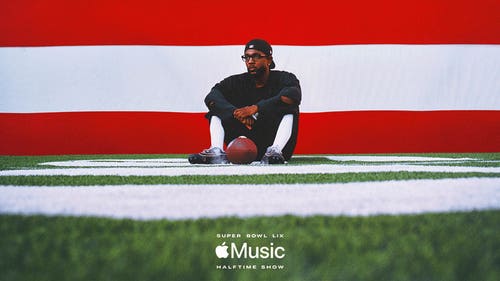
What will the NFL look like in 2020?
On Sunday, at the conclusion of Super Bowl XLVI, the state of the NFL will in many ways crystallize. We’ll know if Tom Brady has won the big game four times and if the Patriots are among the most dominant dynasties ever. Or we’ll know that Eli Manning and Tom Coughlin count among the most accomplished and underrated figures in NFL history.
But let’s take a moment to set our sights a little further down the road — past Sunday, past Brady’s reign and Eli’s promise, past even Peyton Manning’s future — and contemplate where exactly the NFL is headed.
In 2020, what will the most popular sports league in America look like?
Picture this:
The face of the NFL is Andrew Luck, a long-term star as a prototypical drop-back passer. The high-octane offenses that put up huge numbers in 2011 have morphed into a league in which mobile quarterbacks have short but game-altering shelf lives. The headline-grabbing promise of Tim Tebow and less focused upon but more impressive debut of Cam Newton laid the groundwork for what becomes more common by 2020.
The game’s been revolutionized by scouting and technology — digitalized film sessions in which every play of every game can be watched from any angle as if it’s some kind of real-life Madden video game; officials paired with state-of-the-art technology that makes spotting the ball and reviewing plays seem flawless; a generation of coaches who, having shed the my-way-or-the-highway approach, have learned to reach a new generation of players who are harder to motivate through fear alone.
Players return from injuries that once seemed career ending. Fans use mobile headsets to listen in on huddles. Twitter and other forms of social media are used by players on the sideline as they get ready for the next play.
Trying to predict the future is rife with the risk of hindsight’s unforgiving eye. But amidst the guesses and possibilities are some fascinating thoughts for what the NFL could look like in 2020.
Start with the changes in how the game has been played over the decades. Slot receivers have moved to the forefront. Tight ends are among the most dangerous weapons on the field. Shotgun has long been a key formation.
What 2020 football will look like schematically is anyone’s guess. One former GM’s guess is that college football, as it continues to generate more and more income, will keep developing schemes independent of what’s used in the NFL.
For every Chip Kelly who pulls in millions winning his way, there will be scores of athletes trained to play his way.
“You’ll see more and more mobile quarterbacks, kids running around, coaches trying to find different ways to attack defenses with the talent they’ve got,” said Ted Sundquist, the Denver Broncos’ former general manager. “Offensively, the NFL’s going to have to take what college football feeds them. The window of patience for ownership and upper level management is growing shorter and shorter, so you don’t have time to take Tim Tebow and say, ‘I’m going to make him a thrower in three to four years.’ You’ll have to do it now — take this mobile, throw-on-the-run guy and use his skills now. That alone is going to change offenses in the NFL.”
While the NFL competition committee tries to keep a balance between offense and defense — league exec Greg Aiello said they strive for about a 40-point-per-game average — the evolution of offense is unlikely to abate.
Offensive schemes could evolve to the point that positions change dramatically. It could be mobile quarterbacks with college-system backgrounds getting quick work — and quickly banged up. Or some other development that’s an unforeseen consequence of the many other factors shaping how the NFL operates.
Technology will be much of the push and pull that will affect such things — both on and off the field. For the first time this year, the NFL had Twitter stations at the Pro Bowl, where players could tweet their thoughts mid-game.
“That was unique to a game like the Pro Bowl where we’ve always done different things like miking coaches and players and a lot of interviews on the sidelines because of the nature of the game it is: a celebration, and it’s different than the regular season and playoffs,” said Aiello, the NFL’s senior vice president of public relations. “But I think it’s a reflection of where we’re heading in terms of interacting with fans through social media.”
On Tuesday at Super Bowl media day, the NFL for the first time sold about 7,300 tickets to fans for $25 apiece. Each person got a headset to listen in on the interviews from the stands, which took several players by surprise.
At one point, Brady mentioned Manning. The Indianapolis crowd started cheering.
“Can you guys hear everything I’m saying?” Brady asked. The crowd cheered again.
“This is just cool that you can hear me,” he said. “That’s awesome.”
It also could be a look at the future. While there would be enormous competitive-issue hurdles to clear, the idea that fans in the stands could one day put on those headsets and listen to live chatter during parts of the game is not an impossible one.
Nor is the idea that microchips could be placed in footballs to signal when they break the goal line, or that full-time officiating crews could improve the game, or that replay will become refined to the point of ensuring accuracy. FOX rules analyst Mike Pereira has some fascinating thoughts on the future of officiating in the NFL.
Coaches obsessed with information may get all they wished for and more by turning from game film, which still is used by some teams, to tools unimagined in NFL offices 20 years ago.
“They’ll probably be doing digital data that’s projected on the screen as an animated view, and huddles will probably go down that road as well,” said Steven Burkett, the founder and CEO of Eye-Scout, which sells software aimed at analyzing NFL teams and personnel, using technologies intended for warfare to give NFL thinkers an edge in the game.
“We’re already doing that in the military, digitalizing soldiers’ movement on the field,” Burkett said. “That’s already happening. We should be able to take the information from the field, just from cameras, and digitalize it. Just like in Madden where you can take the camera and zoom in on, say, the quarterback’s hand when he releases the ball. You should be able to do the same thing. You won’t be watching film anymore, you’ll be watching a digitalized image of what actually happened in such incredible details.”
Burkett’s company has thought a lot about the future of the NFL — where it’s headed, what it will look like and what exactly teams will need. Sundquist is a partner at Eye-Scout and its director of football operations.
“A lot of what’s going on right now in the NFL is transitional period,” Sundquist said. “There are a lot of guys at every level — coaching, front office, you name it — who have been in the league for a long time. Now, in comes a new generation. When I got into the NFL in 1992 we had no computers — literally one with a blinking green light.
“Now you’ve got a different generation of coach and a different generation of player and they’ve been educated in a different manner on and off the field,” he said. “And those teams that are progressive are the ones who will keep up with the new progression of athlete. And those who don’t, in 2020, will find themselves playing 2000s football.”
So the future may hold quickly evolving technologies, impatient owners, fans who are closer and more connected than ever, and the means for the schematically superior to press their edge even more. All that equals great pressure. And because people are changing as well, many observers say you’ll also have to factor in a new generation of players — ones who may be less inclined to follow blindly but more inclined to follow with all they’ve got if they believe in what they’re doing.
The name of the game in professional football is winning, and that always requires being among the first to adapt and evolve.
All of this adds up to an interesting mix of do-it-now-or-else expectations, technological advantages that help those stronger at Xs and Os, but a need for coaches to be able to reach the modern player in ways that might turn off those who are old school.
“The successful coach will take what they got and win with it,” Sundquist said. “A la Jim Harbaugh, who took what most thought was a laughing stock and went 13-3. I think the coach who thinks along those lines and is progressive in his thoughts is the one that will succeed. Because things just move too fast now. The coach who says, ‘I know people better than I know systems, I’ll use what you’ve got’ will make it.”
So maybe the future is Harbaugh and John Fox, the Denver head coach who took a supposedly suspect NFL talent in Tebow and made the playoffs.
Maybe the future is the mobile quarterback like Robert Griffin III and Newton and, yes, Tebow. Maybe it’s Luck and the schematically superior coach who knows just how to use his drop-back potential — and the emerging technologies that will help him further exploit it.
The future almost certainly holds state-of-the-art tech bringing you closer to the game than ever and social media bringing you closer to the athlete than ever. Medical advances that save athletes’ careers, equipment that cuts down on concussions, culture changes that make turnarounds like the Niners more common, schematic changes that make Tebows more normal and tweaks that keep the game’s offenses humming, defenses trying to catch up and fans reveling in all of it.
Over the next eight years it’s going to be fun finding out.
You can follow Bill Reiter on Twitter or email him at foxsportsreiter@gmail.com.


